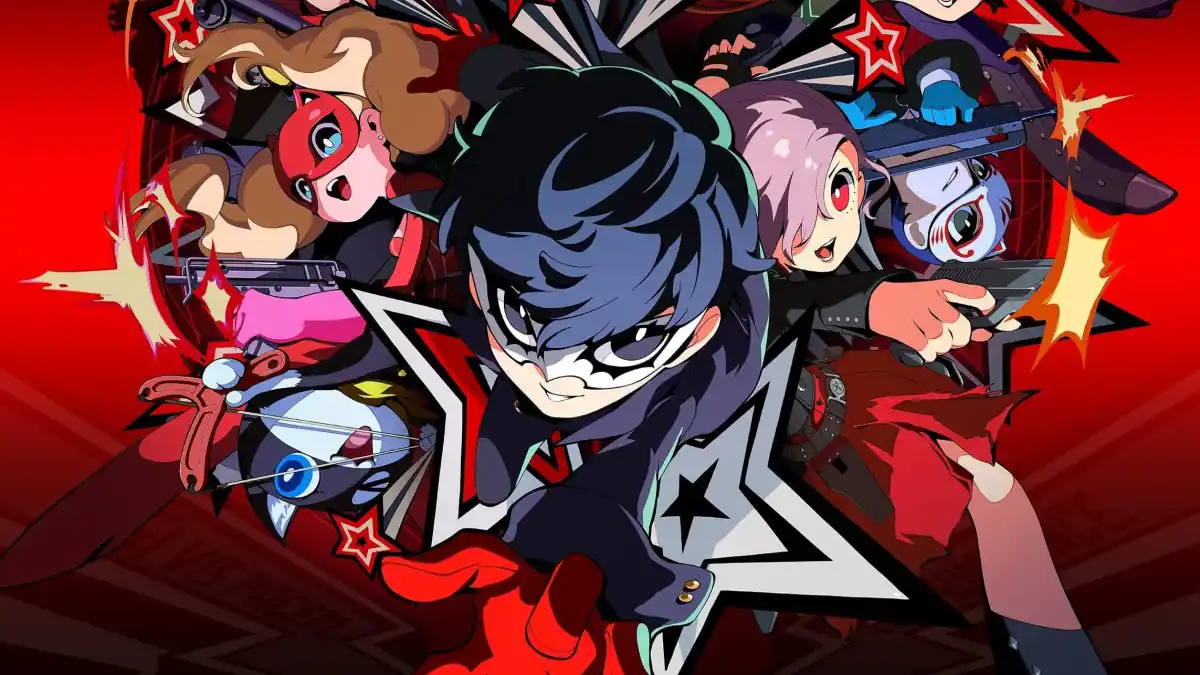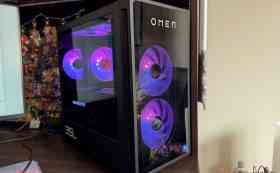It’s strange how well I know the characters of the Persona series, particularly those of Persona 5. The script and scenarios that brought Ryuji, Ann, Makoto, Morgana, and the rest of the gang to life in the original 2016 RPG were so strong that I felt like I would ride or die with them forever, and so far, that’s been the case. In Persona 5 Tactica, the fiery group of teenagers known as the Phantom Thieves are thrown into disarray once more in a fourth spin-off story. It doesn’t feel particularly new or revelatory – this is not really a plot that revolves around them – but the tactical teamwork that makes up the combat action feels very well suited to showcasing their strengths and lively personalities in a new light.
Pulled into an alternate dimension that has both mysterious similarities and differences to the Palaces faced in Persona 5 – essentially supernatural manifestations of real-world human trauma – the gang finds themselves in worlds that resemble different historical periods. After they meet Erina, a passionate Resistance leader in a world fashioned after the French Revolution, and Toshihiro Kasukabe, a real-world politician who finds himself with a bad case of amnesia, the group sets off to help Erina liberate her people, while working out what this place actually is.
Doing so requires the Phantom Thieves to put their cunning fighting methods to use in guerilla-style turn-based battles, where their quick movements, teamwork, and sense of style are wonderfully realised in snappy, flashy, and incredibly moreish tactical battles.
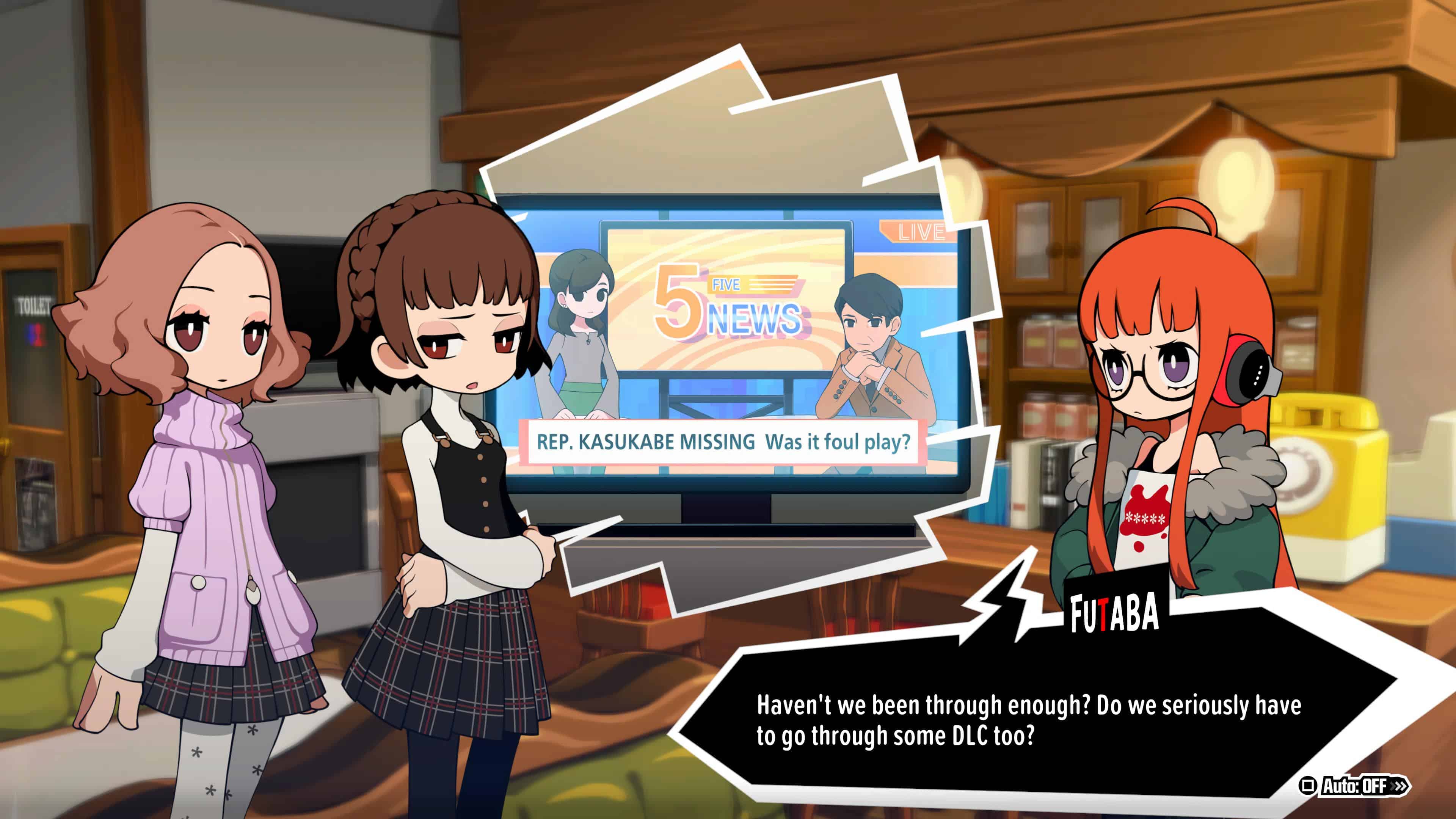
Persona 5 Tactica takes a few cues from recent tactical strategy games that have attempted to break the mould in an effort to bring some dynamism to the genre – Mario + Rabbids Kingdom Battle is front of mind here. Free-range movement and an emphasis on enemy displacement and melee attacks are at the forefront. The Phantom Thieves also wield firearms, but cover mechanics are simplified (if you’re in cover, you gain protective benefits even if you’re being flanked), and hit probability doesn’t factor in at all – you will always land your attack.
Facets of the press turn battle system from Shin Megami Tensei (Persona’s parent RPG series, from which it derives the majority of its mechanics) also come into play, and work very well. There are no elemental weaknesses to exploit, but attacking an enemy which is exposed in the open will earn the attacker the right to another action, as well as an extended movement range. Melee attacks and character abilities serve as tools to foist people out from behind cover.
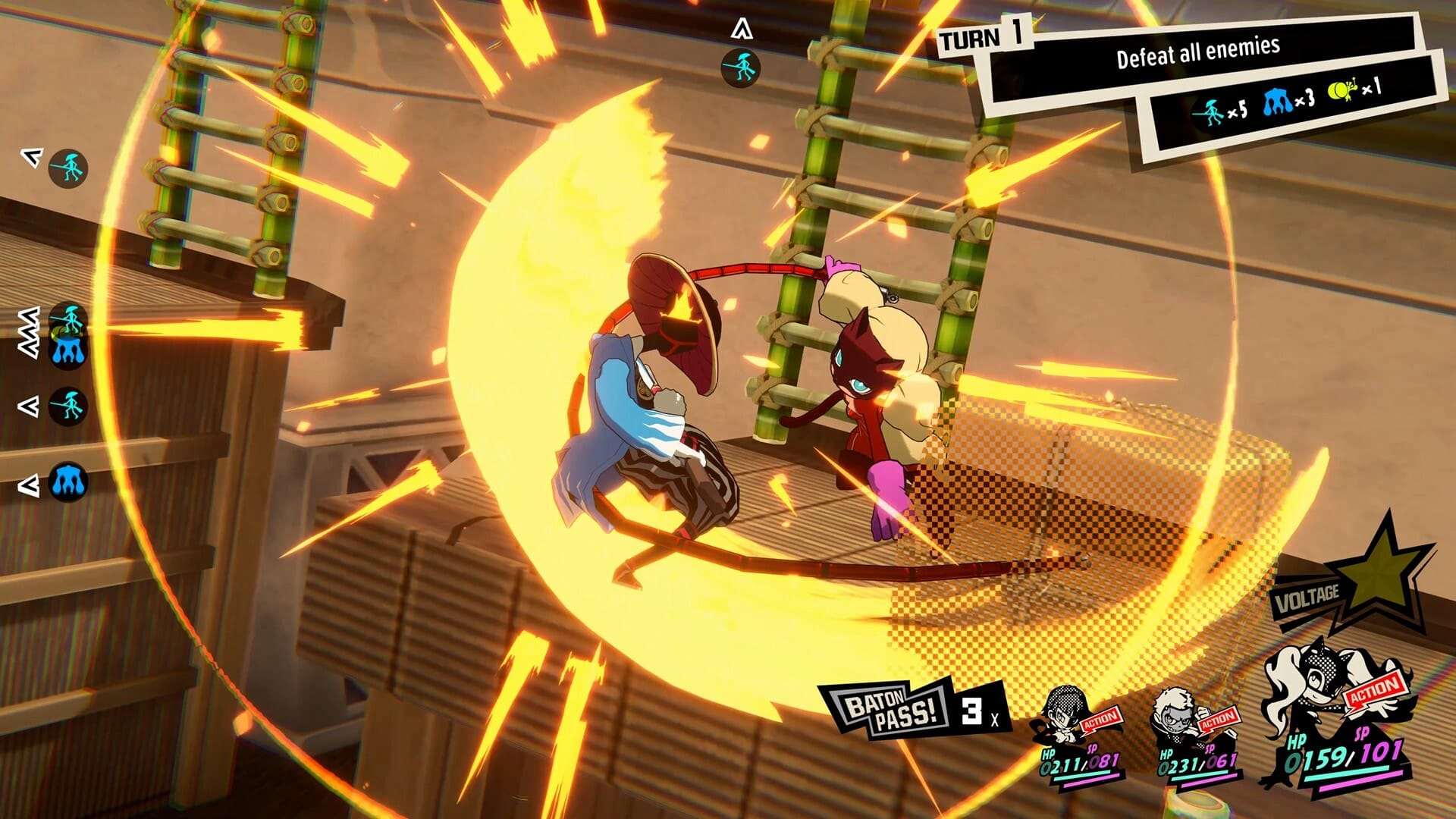
With the majority of fights featuring a squad of three characters against a dozen enemies or more in close quarters, the “puzzle” of battle is to work out the optimal order of operation to expose enemies, and take advantage of the press turn system to help your characters quickly move across the battlefield and dish out more damage.
You might use Morgana to sweep a couple of enemies out of cover by using his Garu (wind) spell (Persona’s other ‘magic’ abilities deal appropriate status or movement effects). This might allow Ann to take advantage of their exposed position – by attacking them, she can earn the momentum to get right across the battlefield, and up onto a rooftop. From there, Ann can use her melee attack to boot an enemy off a roof – a move that can be instantly followed up by Ryuji blasting them out of the air with his shotgun, in an immensely satisfying team-up attack.
What’s more, Persona’s “All-out Attacks” have been given a spatial condition, which rewards smart planning and good positioning. Once an enemy is downed by being attacked out in the open, if the three characters can surround them, they can initiate a “Triple Threat” All-out Attack – wherein every enemy contained within the triangle formed by the squad (each member acts as one of three corners), will take a great degree of damage. In the best-case scenario, you can leverage the press turn system to send two members to the far reaches of the stage, and unleash multiple All-out Attacks that heavily damage all the enemies on a map. It’s an incredible feeling when you can pull it off, and plays heavily into the guerrilla nature of the Phantom Thieves’ crafty approach to battle.
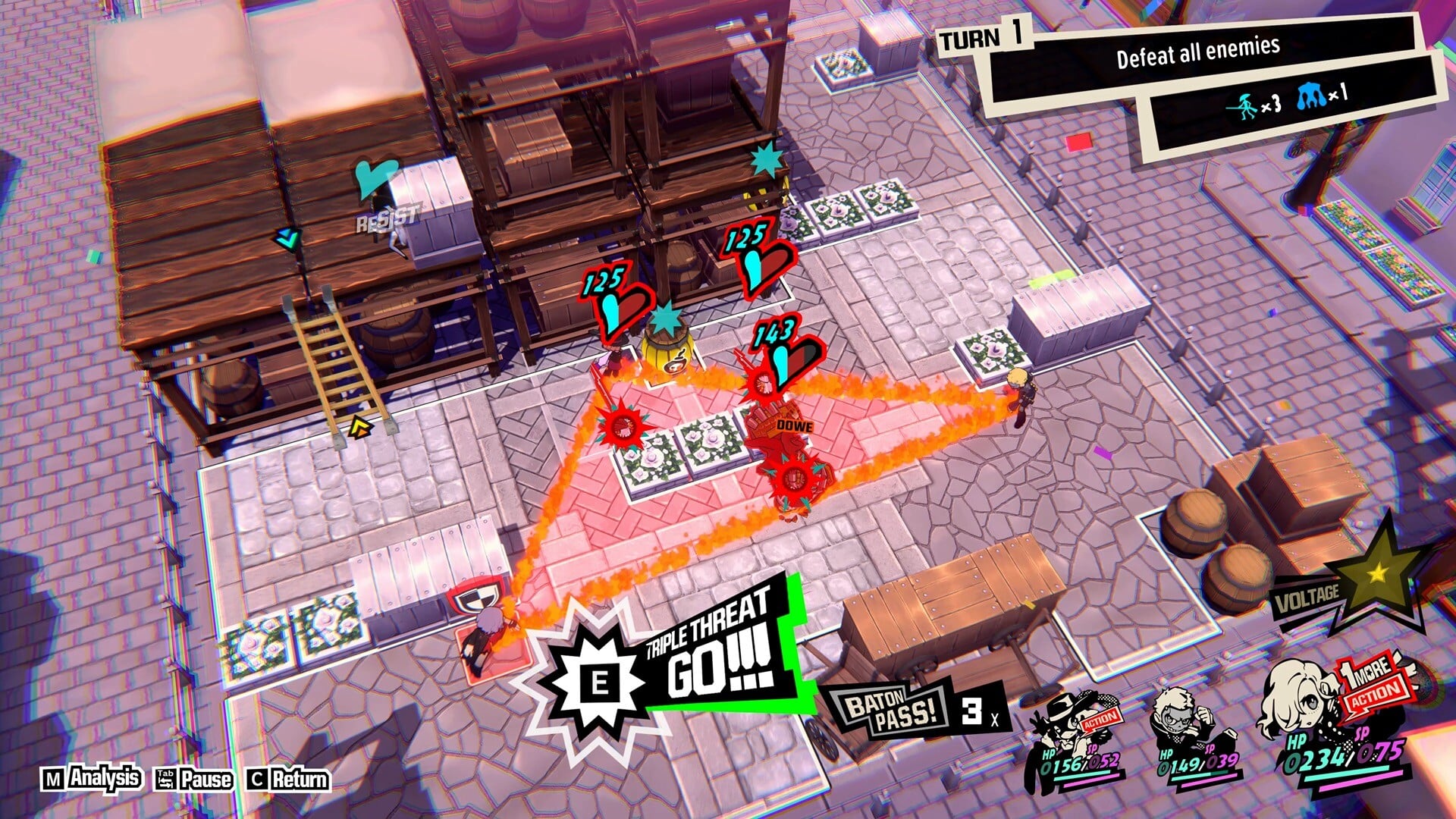
Persona 5 Tactica makes a few major modifications to the rules of the RPG, in service of making the battles more flexible – while each character maintains their signature Persona (fantastical beings that manifest out of their psyches), each Phantom Thief can now equip any other Persona you collect, which provides additional skills. Previously, only the blank-slate protagonist Joker could swap out his Personas.
Shin Megami Tensei’s Persona fusion system also returns, where you can merge Personas to create more powerful ones, alongside a new system where you can create new firearms by merging Personas, too – and they’ll come imbued with related status effects.
Certain Persona mechanics that seemed like they would be perfect for Tactica are sadly absent, however, namely Social Links – a character relationship-building mechanic that informed both the narrative and the combat effectiveness of two particular team members in the original RPG. Instead, Tactica opts to depict downtime, character chatter, and relationships in straightforward visual-novel-like vignettes, some of which are optional (though they reward you with skill points to spend on your characters, there’s some obligation to see them through).
Therein lies the main point of weakness for Persona 5 Tactica – the storytelling outside of the blistering tactical battles is much slower paced, and the chapters can feel long-winded and over-written in the way that anime games often are. It’s exacerbated in Tactica by the fact that there are none of the familiar and meaningful non-combat interactions to motivate you as time passes, on top of the fact that the story is so focused on the machinations of the plot, rather than character relationships.
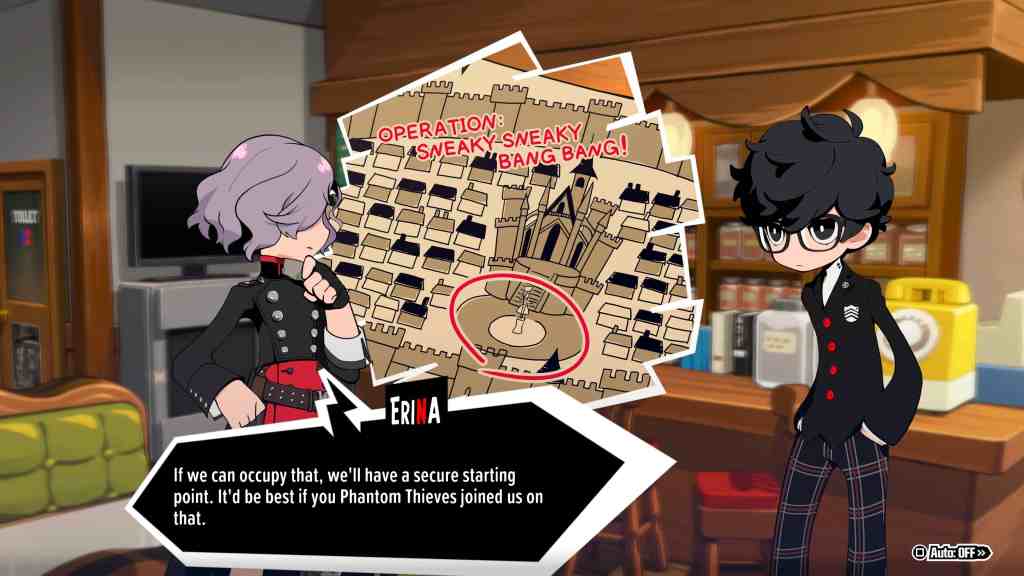
Watching the mystery unravel certainly has its moments, especially when revelations about Kasukabe and Erina come to light, and Persona’s entertaining portrayal of perceptive teens cutting through the bullshit of the adult world remains. But the more standard beats that lead up to the big plot moments aren’t as exciting, and without a meaningful vector to meaningfully engage in the downtime myself, my tolerance for the extended visual novel chapters of the game would fluctuate, depending on my mood. Overall, it feels like they dragged out the pacing of the game, especially when all I wanted to do was jump right into the next chaotic battle.
Throwing the cast of Persona 5 into a world of turn-based tactics works incredibly well, and the mechanical twists made to support it pay off in a very gratifying way. Outside of that, there are very few risks taken in the narrative – it’s a low-stakes plot that bubbles along, gives the game a stop-start feel, and ultimately feels like the peripheral side-story that it is. But when your favourite characters are tearing up the battlefield and wiping out whole armies of enemies in a big All-out Attack, Persona 5 Tactica feels like the best interpretation of the Phantom Thieves spirit.
4 Stars: ★★★★
Persona 5 Tactica
Platforms: PC, PS5, PS4, Xbox Series X/S, Xbox One, Nintendo Switch
Developer: Atlus, P Studio
Publisher: Sega
Release Date: 16 November 2023
|
N/A
|
$19.18
|
$28.49
|
$27.25
|
The PS5 version of Persona 5 Tactica was provided and played for the purposes of this review. GamesHub reviews are rated on a 5-point scale. GamesHub has affiliate partnerships. These do not influence editorial content. GamesHub may earn a small percentage of commission for products purchased via affiliate links.
